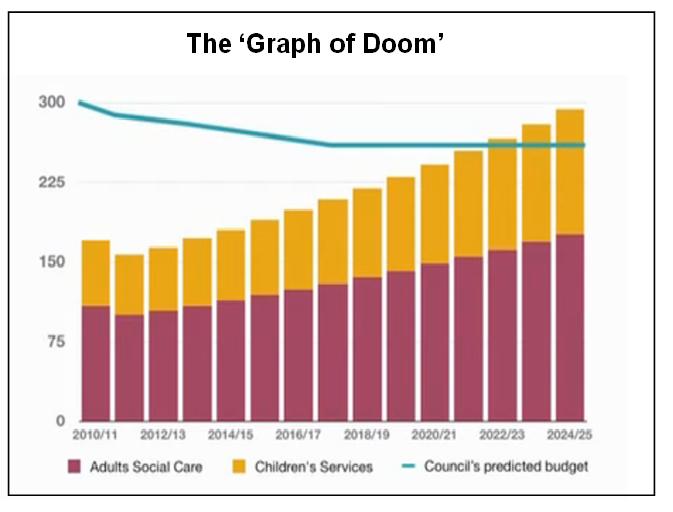Councillor Graham Chapman
It’s not only clothes and pop music which are subject to the vacillations of fashion. They affect the more mundane world of local government too. Elected mayors for example are a fashion of the ‘naughties’, when larger-than-life bankers, entrepreneurs, football managers, celebrities of all types were supposed to provide solutions to a whole range of problems by dint of pure charisma and personality. Even the staid role of the chief executive is subject to fashion.
The traditional function of the chief executive with a legal background overseeing due process and formal decision making, gave way in the 80s to the more managerial approach, and perhaps was the heyday for the role. In the 90s and early 2000s it took another turn. Under the cover of the CPA and star ratings, where the chief executive was given a far more important role by the inspectors than the leader, and encouraged by SOLACE and the Blair Government, the ‘personality’ Chief Executive emerged. It was thankfully not totally pervasive but frequent enough to create conflict with the role of the elected members, and to increase chief executive remuneration in some cases to a point of embarrassment. We are now going through a counter-revolution, partly because a minority of chief executives overplayed their hands, partly because of the recent antagonism whipped up against the public sector and because chief executives, as some of the most highly paid public servants, are an easy target. The counter-revolution now questions the need for the role at all and a number of authorities have abolished it, or are in the process of doing so.
My view is that chief executives are essential. A good chief executive provides continuity and integrity to the local government system, and a healthy counterpoint to political decision making. The system is part of a British tradition of local government which, being British, we do not appreciate sufficiently. But if the role is to be accepted, de facto it does need to rid itself of some of the fashions it has been subject to and it needs to establish a set of core principles. The best, perhaps the only, set available has been devised by Roger Taylor, former chief executive of Manchester and Birmingham. The principles should be of particular interest to the more buccaneering breed of chief executives who see themselves as more important than their members.
So here they are in précis in Roger Taylor’s own words.
1. However powerful a chief executive may seem, his/her success is always dependent upon gaining and maintaining high levels of political confidence and approval.
2. Chief executives need to develop a clear sense of the corporate which is informed by, and contributes to, the politics of place
3. However difficult it may be for the political leadership at the time, it is vital that chief executives can demonstrate a clear moral and ethical compass and foundation to their work.
4. Chief executives are at the nexus between the democratically elected council and it’s paid servants. While they will be the leaders to the paid service, they can never allow themselves to become partisan.
5. Chief Executives must always avoid being “the story”. Some of the best chief executives are those who eschew the limelight and concentrate on the affairs of the council.
6. How well chief executives are likely to ‘gel’ with officer colleagues will always be less important than their intellectual capacity and ability to explain complex things clearly.
7. Chief executives need to have, and to demonstrate, the political skills to manage effectively in the spaces between leadership and opposition councillors.
8. Competent chief executives never need fear the working communications between their colleagues and the political leadership.
9. Chief executives need to have some empathy with the complexities and the arduous nature of leadership in the Council.
10. Chief executives who work with a political faction and against the leadership should never be trusted, especially by the political faction they work with.
11. Chief executives need always to bear in mind that neither the conferences nor the special roles pay the salary. Chief executives constantly need to bear in mind what their day job is.
12. The heart of any relationship between leader and chief executive has to be trust, truth and tolerance. It should never be an intimate friendship but it should always have with it an informality and an appreciation of each other’s company.
13. Leaders should have a clear idea about what they want chief executives to achieve and they should be able to rely on objective and independent support for the negotiation of these objectives and subsequent review of the chief executive’s performance.
To summarise: I have little doubt that the move to abolish the role of chief executive will turn out to be the most ephemeral of the fads and that those authorities trying to survive without one will return to the fold. However, it does not mean that the role does not need shoring up and insulating from the sum of the political and, often self-induced, managerial opportunism to which is has been subject. Roger Taylor’s list of dos and don’ts is a good start.
Graham Chapman is the Deputy Leader of Nottingham City Council, and the Portfolio Holder for Economic Development, Resources and Regeneration. He is a Councillor for Aspley Ward.






